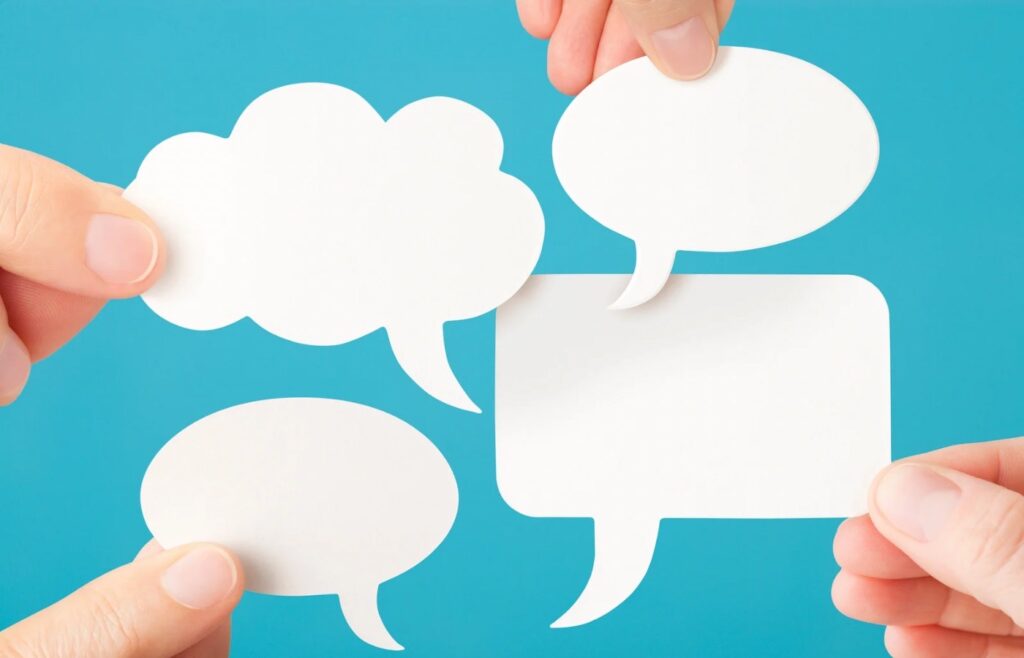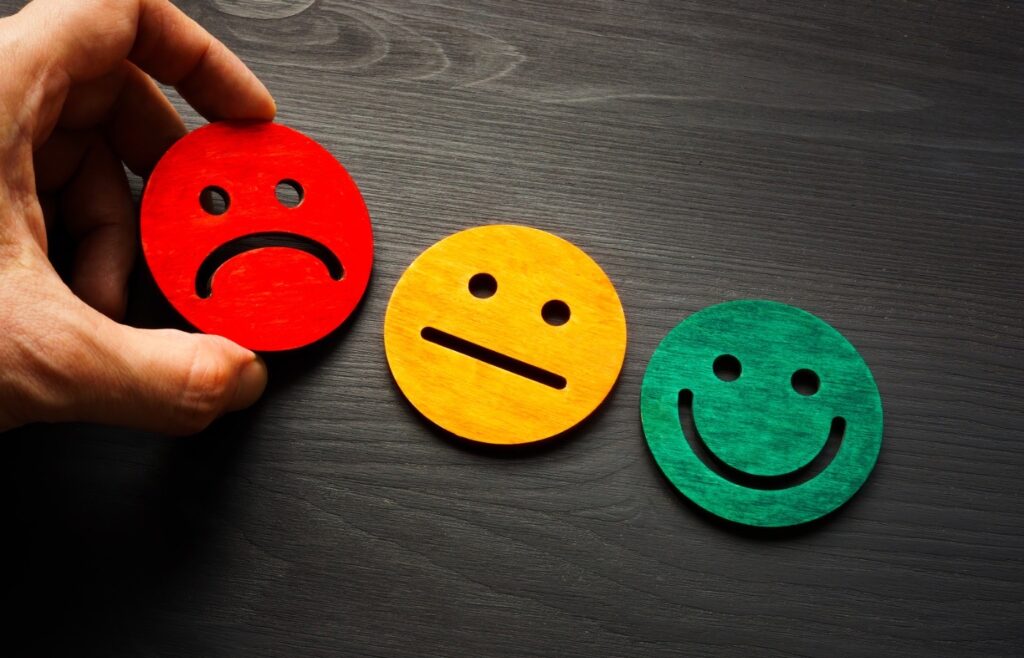Are you worried you’re not getting the right content in front of the right people at the right moment in their buyer journey?
To achieve your content marketing goals, you need to be able to use personas to target specific buyer types with tailored content. Enter the Buyer Persona.

Lots of brands put in the hours to produce content that they think their audience will find useful. But here lies the problem. Businesses that produce content based on guesswork or a hunch will only be able to pick low-hanging fruits.
The most successful content marketing plans are designed with the customer in mind. So, if you don’t have a detailed picture of your ideal customer and what makes them tick, how will you know who you are creating content for?
The answer is to create in-depth buyer personas (personae if you want to get all fancy) to reach your target audience with laser-guided precision. Your customers don’t think or buy as one, so build a narrative for fully developed characters that take the lead role in your brand story.
But where do you start? Here’s our guide to creating and developing a compelling buyer persona.
What is a buyer persona?

In an older post, we looked at why buyer personas are the keystone of your content marketing strategy – you need to build these to improve your content. The most effective content marketing strategies use real-world insight into the types of people you are writing for. Your persona will inform everything from the tone of voice you adopt to the topics you choose to write about to the formats and channels you use to share your content.
A buyer persona gives you a clear picture of why your target customer would choose your brand over another. This is powerful stuff when you get it right. Before we walk you through the steps that will help you understand what your ideal customer looks like in terms of behaviour, motivations, values, tastes, interests, and aspirations, let’s quickly define what we mean by buyer persona.
Defining the ‘buyer persona’
Hootsuite sums it up nicely: “A buyer persona is someone who represents your target audience. This is not a real customer, but a fictional person who embodies the characteristics of your best potential customers.”
You might be tempted to create more than one persona, reflecting insight into why different types of customers make the decisions they do. However, we recommend creating just one persona; this is often trickier because it means making tough choices and excluding some factors that might feel difficult to let go of. By creating only one persona, you can narrow your focus to the essential elements you are trying to communicate about your business. That makes your content strategy leaner, simpler, and ultimately more effective.
Creating a detailed buyer persona is easier than you think.

Do your research. Tap into the masses of customer data you collect and segment your audience into specific character types. Again, keep it simple – choose only the most relevant data points to your
business. Behavioural science guru Rory Sutherland thinks it mostly comes down to age, but other important factors might be sex and where they live. You can deduce quite a lot just from those three facts – making educated guesses of income, lifestyle, what they read/watch, where they holiday, etc. If you haven’t got the accurate data yet, then make assumptions – that could be based on researching your competitors, looking at consumer data related to your product or service, focus groups, or if you’re a smaller enterprise, basing your assumptions on someone you know who could be a potential client.
What’s the difference between a buyer persona and your target market?
Your target market is your broad audience; it’s an expansive group of potential customers that a business aims to reach with its products or services. This group is defined by a set of shared characteristics, such as demographics, geographic location, purchasing power, and buying behaviours.
For example, a company that sells fitness equipment might identify its target market as adults aged 25-45 who are health-conscious and have a disposable income to spend on home workout gear.
On the other hand, a buyer persona is a specific representation of your ideal customer based on detailed research and data. You should write it as if it’s a real person or a character in a story, with real desires and dislikes, with a name and even a photo. A buyer persona dives deep into the specific characteristics, behaviours, motivations, and challenges of a smaller, well-defined subset of your audience.
For example, a buyer persona for the same fitness company might describe ‘Fit Fran”, a 35-year-old working mother who values time efficiency and exercises at home to balance fitness with her busy family life. She is motivated to maintain her health but needs workouts that are quick, effective, and easy to integrate into her daily routine.
How do they work together?

While a target market provides the overarching framework of who your customers are, buyer personas allow you to zero in on the individuals within that market who are most likely to engage with your brand. Think of the target market as the “big picture” and the buyer persona as the “close-up” that reveals finer details.
How important is a buyer’s persona?
Buyer personas offer brands a clear, detailed understanding of their target customers as they outline semi-fictional representations based on real data, customer demographic insights, patterns in behaviour, motivation and goals. A study by ITSMA revealed that 44% of marketers use buyer personas for their businesses, with most high-performing companies mapping more than 90% of their customer database using personas. While many brands still need to jump on the bandwagon, the evidence is clear – those who do see success. Here are a few benefits a business can expect after opting to use buyer personas in their marketing strategy:
- Targeted content creation: They enable you to create content that directly addresses the specific needs, pain points, and interests of different segments of an audience. Instead of generic messaging, you can produce highly relevant content that speaks to each persona’s unique challenges and desires, leading to higher engagement rates, improved SEO performance, and, ultimately, more conversions.
- Personalised marketing campaigns: With detailed personas, marketers can create personalised marketing campaigns that resonate on a deeper level with an audience. Personalisation can be applied across various channels, including email marketing, social media, and paid advertising. By speaking the language of each persona and addressing their specific concerns, businesses can build stronger emotional connections, fostering trust and loyalty.
- Efficient resource allocation: Understanding who your most valuable customers are allows you to allocate marketing resources more efficiently. Rather than spreading efforts thin across a broad audience, businesses can focus their time, budget, and energy on the personas most likely to convert. This targeted approach maximises ROI and ensures that marketing efforts are concentrated where they will have the most significant impact.
- Improved product development: Buyer personas provide insights into what your customers truly want and need, helping to guide product development. By aligning product features and services with the desires and expectations of your personas, you can create offerings that are more likely to succeed in the market. This alignment also reduces the risk of product failures and increases customer satisfaction.
- Enhanced customer experience: Developing buyer personas helps businesses understand the entire customer journey, from initial awareness to post-purchase interactions. Companies can identify opportunities to enhance the customer experience at every touchpoint by mapping out this journey for each persona. This can lead to more meaningful interactions, higher customer retention rates, and positive word-of-mouth referrals.
- Alignment between sales and marketing: They help to maintain better collaboration between sales and marketing teams. With a shared understanding of the target customer, both teams can collaborate more effectively to create strategies that attract, nurture, and convert leads. This also ensures a consistent message throughout the buyer’s journey and helps to streamline the sales process.
- Data-driven decision-making: Personas are built on data and real customer insights, which means that marketing decisions based on these personas are more likely to be data-driven rather than based on assumptions. This approach leads to more accurate targeting, better forecasting, and an overall more strategic marketing effort.
- Adaptability and growth: As markets evolve, so do customer preferences and behaviours. Well-developed buyer personas allow businesses to quickly adapt their strategies to meet changing demands. Personas can be updated and refined over time, ensuring that marketing efforts remain relevant and effective as the business grows, trends change, and the brand enters new markets.

How many personas should you create?
As we mentioned earlier, one persona is enough for most businesses. We know this is contentious, but in our experience, the discipline of honing a single persona makes communication far more effective. Imagine doing the classic “sell me this pen” routine to three or four people simultaneously. The whole point of the routine is to understand the individual and their motivations first, then adapt the selling strategy to their desires.
If you had to sell the pen to three or four different types of people at once, it would be highly confusing and complicated, and you would end up with a “lowest common denominator” benefit that would be the most diluted form of your sales pitch. Your home page doesn’t allow for much complexity – most people decide within five seconds whether it’s relevant or not. Far better to have a single, honed message that appeals to your most relevant customer than a confusing muddle of messages that try to appeal to everyone – or, more accurately, try not to exclude anyone. Personally, when I see sites like this, I feel it shows a lack of confidence in the product or service, but that’s probably a topic for another time!

We recommend segmenting your audience by identifying different customer groups based on demographics, behaviour, or purchasing history.
Identify your primary persona—representing your most valuable customer segment—and focus your efforts on this first. Later, as your strategy evolves, you might want to develop secondary buyer personas to fill in any missing gaps or reach new prospective customers.
There are lots of free templates that you can download and adapt for your business. Here are a couple of examples of buyer personas from Product Marketing Alliance. Right, are you ready to start creating? Here’s our complete guide on how to create a buyer persona.
How to create a buyer persona
Preparing your research
Whether you are considering developing your buyer persona or looking to update what you’ve already got, you need to keep your research up to date to build on what you know about your customers.
Even if your business already has buyer personas, it’s important to revisit them to ensure your content is still relevant and valuable for your audience.
Analysing real-world customers is the best way to gain the actionable insight you need when developing a buyer persona. If you’re a B2B business with a small number of client relationships, you can ask them questions about what made them buy from you. However, for most companies, getting to know each customer individually is virtually impossible, so asking the right questions of a sample will help you build a more detailed archetype. A note:
Here is a list of questions to help you get the answers you need to develop specific buyer archetypes you want to reach with targeted content. While demographics are important when creating a buyer persona, try to seek answers beyond age, gender, location, etc. You’ll need to consider their background, interests and lifestyle, attitudes, behaviours, and motivations.
Demographics—How old are your customers? What gender do they identify with? Where do they live? Are they settled nesters or empty nesters, or do they have the removal company on speed dial?
Home life – Who do they spend their home life with? Do they have children? Do they have extra caring responsibilities? Do they have pets?
Work/study life – What types of work do they do? Are they students or life-long learners?
Finances and budgeting – How do they spend their money? Are they budget-conscious, cash-strapped or spendthrift?
Values – What do they value in a brand? How does your brand purpose align with these values?
Aspirational lifestyle – What makes your customers get up in the morning? What are they striving for? Where do they want to be in the next five years?
Decision-making—Is your ideal buyer logical and methodical or spontaneous and impulsive? Do they like to devour detail? Or do they fear missing out and prefer content that appeals to their impulse to buy now? The way people make purchasing decisions is more nuanced and unique to individuals, but you can’t get to know each customer, so it’s always helpful to find commonalities.
Content consumption – Where do they consume their content? What content sources do they trust? Which newspapers do they read? Where do they go for inspiration – are there specific lifestyle magazines or blogs they read?

Hobbies and interests – What do your customers do in their spare time?
Goals and pressure points – What problems are they trying to solve? What keeps them awake at night? What are their priorities?
Online behaviour – What social networks do they hang out on? Where do they look for incentives to save on purchases?
Communication – What types of communication do they prefer? Which channels will best help you reach your target customer?
Customer experience – When did they last have an outstanding customer experience? What made it great? When was the last time they had a poor experience? Why were they disappointed?
Brand and product affinity – What are their favourite brands? Why?
How to gather the data
From the comfort of your desk, you can mine the customer data you already have at your disposal to find actionable insights.
Customer feedback—Use customer surveys to understand your customers’ perceptions of your business and their needs, expectations, and pain points. This is the quickest route to seeking answers to your questions.
Social media mentions – If you ask a question like “What do you like about our products and services” the responses you get from a structured survey could be biased because the customer gives you an answer they think you want to hear. Or for other questions, they are led by the nature of the question. Social media users tell brands – and just about anybody else who wants to listen – what they think about brands, the good and the bad. Comments are made when emotions are at their rawest. These mentions are invaluable in helping you build an unbiased picture of your ideal customer.
Social media tools—Facebook, Twitter, et al. all have analytics on your audience demographics, interests, and behaviours that you can mine to find customer types and traits that you may not have considered.
Data capture forms – What information can you glean from the data capture forms people fill in when they sign up for your email list or download content?
Start a conversation
Your customers – Interview your customers because there is no substitute for a real conversation. Think about how you can ask more open-ended questions to find out more than a survey can tell you. For example, you could ask – “what does a day in your life look like”?
Customer-facing employees – Ask your employees for insight into their interactions with customers.

How many interviewees do you need?
You won’t have the time or resources to interview many customers, and you probably won’t have the budget to outsource this. Try to line up 3 to 5 interviewees for each type of persona you are developing. Don’t forget to prepare your questions in advance.
Questions to ask your customer focus group
If you’re short on time or don’t know where to start, here are our top questions to ask your customers to help you define your buyer persona.
1. Demographic information
- What is your age, gender, and marital status?
- What is your highest level of education?
- What is your occupation and industry?
- What is your annual household income?
2. Professional background
- What does a typical day at work look like for you?
- What are your job’s primary responsibilities?
- What skills are essential for your role?
- What are your career goals for the next 5-10 years?
3. Personal background
- What are your hobbies or interests outside of work?
- How do you usually spend your weekends or free time?
- What are your main personal goals or aspirations?
4. Challenges and pain points
- What are the biggest challenges you face in your role?
- What are the most significant challenges you face in your personal life?
- What tasks or activities do you find most frustrating or time-consuming?
5. Buying behaviour
- How do you typically research products or services before making a purchase?
- What factors are most important to you when deciding to buy a product or service?
- What are some reasons you might choose not to buy a product or service?

6. Decision-making process
- Who else is involved in your decision-making process when making a purchase?
- How long does it typically take you to make a purchasing decision?
- What information or resources do you rely on to make a final decision?
7. Brand perception
- What brands do you trust the most and why?
- What makes a brand stand out to you compared to its competitors?
8. Product/service experience
- What do you value most in a product or service like ours?
- What improvements would you like to see in products or services like ours?
- What has been your experience with our product/service so far?
Your persona should reflect the different stages of the buyer’s journey
Consider creating your persona to reflect the different stages of the buyer’s journey—awareness, consideration, and decision. Each stage may require different messaging, content, and engagement strategies.
With a stage-specific persona, you can better tailor your content marketing efforts. For example, the awareness stage may respond better to educational content, while the decision stage may be more interested in product demos or testimonials.
Collaborate across departments
Encourage collaboration between marketing, sales, customer service, and product teams when developing your persona. Each department interacts with customers differently and can provide unique insights to make your persona more robust. Once your persona is in use, establish feedback loops with these teams to continually refine and update your buyer persona based on real-world experiences and new data.
Create negative personas – what types of people are not your ideal customer?

You have worked hard to build a detailed picture of your ideal customer. Why not work out who your ideal isn’t? Not everybody in your audience will want to buy from you. Some may be influencers who help you get your content in front of people who may not know about your brand yet. These are important. But there will be customer types that are not ideal. These are known as negative personas, and it’s important to think about the reasons why they are not your ideal customer so your team doesn’t waste time on low-value leads – or even high-value but high-maintenance enquiries.
Test and validate your customer personas
We recommend doing this by:
A/B testing: Use A/B testing in your marketing campaigns to validate your personas. For example, test different messages or content types with different persona groups to see what resonates best.
Surveys and feedback: Periodically survey your customers to see if your personas still accurately reflect their needs and behaviours. Use this feedback to make any necessary adjustments.
Set a review schedule: Establish a regular schedule (e.g., quarterly or annually) for reviewing and updating your personas. As market conditions change and new data becomes available, your personas should evolve to remain relevant.
Track trends: Keep an eye on industry trends, technological advancements, and changes in consumer behaviour that may impact your personas. Adapt your personas to reflect these shifts.

Finally – bring your personas to life
To bring your buyer personas to life, give them a name. You can even create an avatar for them. Have fun with it. Once you know who you are writing for and why, you have the golden ticket to effective content marketing.
What’s next?
What’s your experience of creating a buyer persona? Any tips to share with our readers? Let us know in the Comments section below.
We can craft content that’s a perfect fit for your target customer. To find out more, call us on 01803 865025 or drop us a line.
